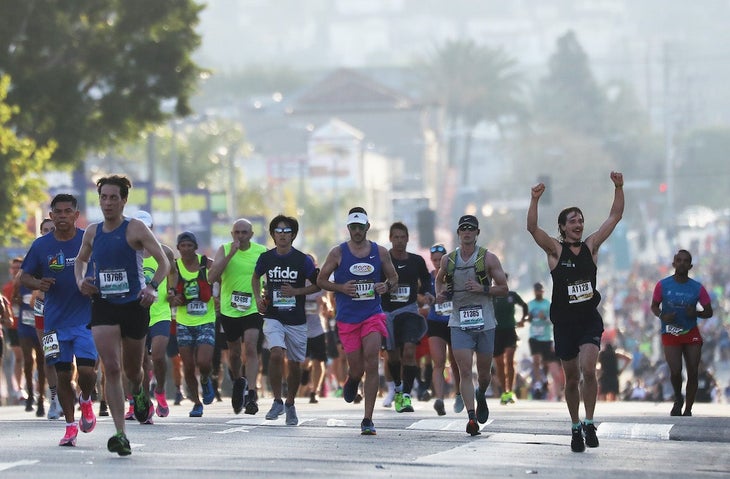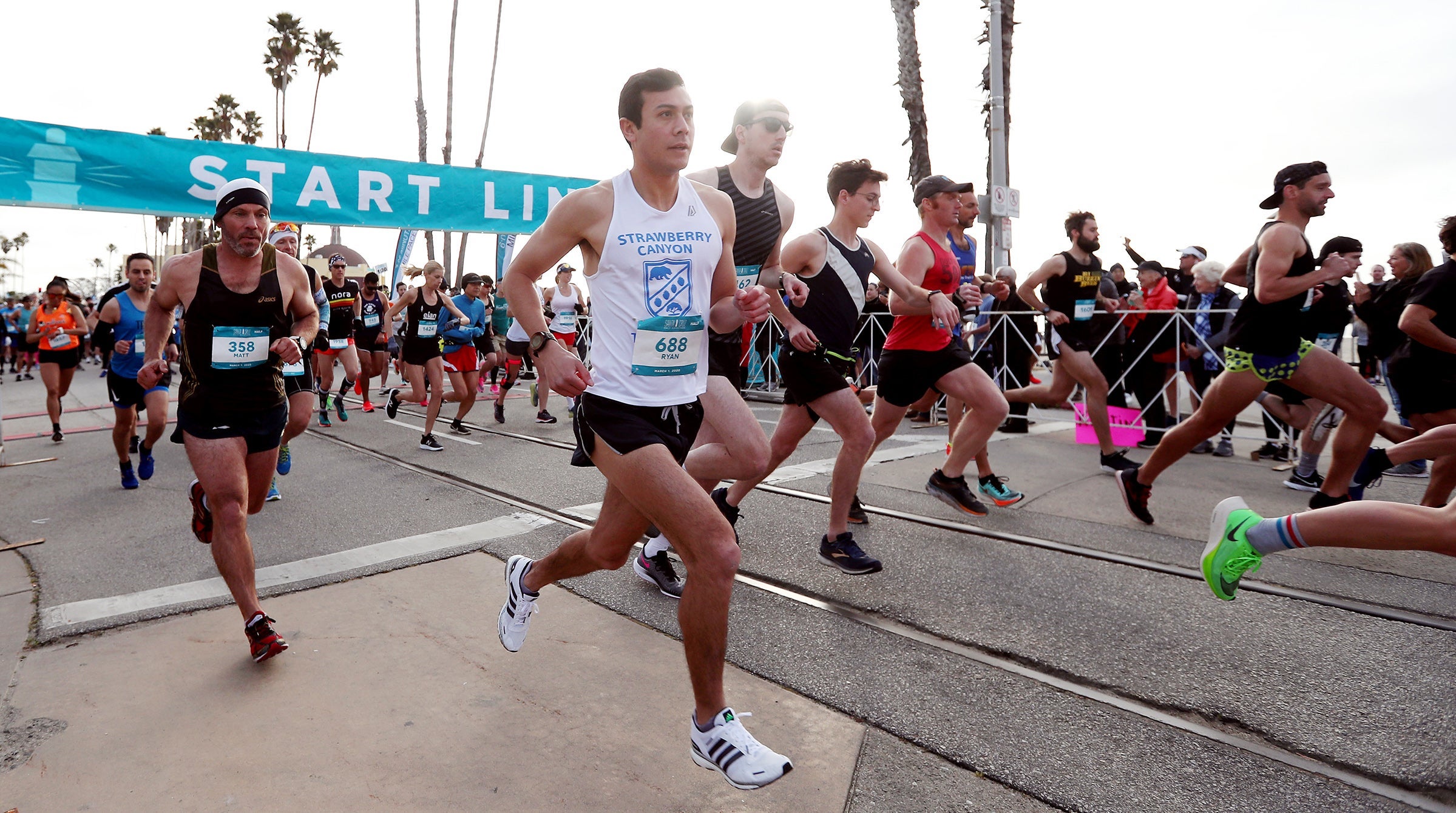Where were you when your 2020 goal race was canceled? Probably at home. That’s where people were in 2020.
Well, now races are back. And each week, more and more runners are finally relishing in the opportunity to toe the start line of their favorite race. It’s an experience you probably spent plenty of time daydreaming about in the last year-plus.
But if you’re like many others, you may find that your racing fitness and the race experience aren’t quite all the way back to “normal” yet. And that’s particularly true for your first race back.
After such a long layoff from racing, you may need to approach your upcoming races a little differently than you did in the “before times.” Keeping these steps in mind will help give you the best chance of your first race back being a positive experience.
Step 1. Take honest stock of where you are
Each of us reacted differently to the upheaval of the COVID-19 pandemic. Many people had more free time than ever to train — but there was also a loss of structure, routine, and community support that a lot of us count on for maintaining our training.
So, it’s important to recognize that you’re not the same runner that you were in March 2020 (for better or worse) and take an honest look at where you are.
For Taylor Williamson, a runner from Washington, D.C., working from home while his daughter’s daycare was closed was a good time to finally take some time off from running and give long-standing injuries a chance to heal.
Others, like David Terry from Atlanta, Ga., were able to keep up their regular running even with no races on the horizon.
That meant when it came time to plan for races, Williamson and Terry were in very different places and had to take very different approaches to preparing for their races.
“Basically I wanted to get back to a point where I could race the half marathon,” Williamson says. “I didn’t want to just run it, I wanted to feel like I actually did something.” That meant a slow build-up of mileage and gradually working in light speed workouts over a two to three month period before the half marathon that marked his first race back.
Terry, however, was able to just increase his focus on race-specific speed work in the final weeks before the Peachtree Road Race on July 4th and still run a time that was comparable to previous Peachtree’s.
The training leading up to the first race back was different for each, but the key similarity is that both Williamson and Terry approached their training from where they were at currently — with no consideration to where they were pre-pandemic.
Step 2. Keep expectations low
“When an athlete is coming off a long period of time without a race, there tends to be an inherent excitement surrounding their first race back,” says Ben Rosario, the head coach of Northern Arizona Elite. But it’s important to not get too excited and set a race plan that exceeds your current fitness, according to Rosario.
Instead, it may make the most sense to go into the race without much of a race plan at all.
That’s the approach that Sarah Kuehl from Atlanta, Ga., recommends after recently running her first race back at Peachtree. “I would say to focus on the emotions underlying racing again rather than a specific time,” she says. Kuehl says that will also keep you from making too many comparisons to your pre-pandemic running and getting discouraged.
Williamson also skipped any goal setting for his first race back. Knowing that he had taken time off for an injury, he says that his only goal was to finish healthy. He says that skipping his usual pre-race goal setting process allowed him to keep his expectations in check and run how his body felt.
Rosario agrees that not trying to force a specific result can be a useful approach when racing after a long layoff, and allows you to see where your fitness is currently at.
Step 3. Be ready for emotions and enjoy the experience

When you get to race day, it’s likely that the experience looks a little different than you remember, with extra screening procedures and security. That, combined with not having raced in awhile, can make normal race day anxiety even more pronounced.
Because of that, Rosario recommends signing up for your first race back with someone you’re used to running with. “It’s typically easier to go through race morning with a friend by your side,” he says.
It’s okay to feel some extra emotions, too. Kuehl says when she saw the race set-up, “I felt like a piece of my life was falling back into place.”
Those kind of big emotions can make it hard to follow your race plan.
Kristin Wagner from Atlanta, Ga., found the excitement and extra adrenaline from seeing her running friends again for the first time in almost a year led her to start faster than she had planned in her first race back. In Wagner’s case, that worked out as she broke her previous half marathon PR by almost a minute.
But if you find your race plan falling apart, take the time to relax and enjoy the experience. “After having the long, unplanned break from racing, I am going to really savor these types of experiences going forward and try not to take them for granted anymore,” says Terry.
Step 4. Plan more races: the best is yet to come
As important as it is to savor each racing experience, though, the hope is that in-person races are back to stay. And that means that your first race back is not your only race. So use this first experience as a stepping stone to bigger, and faster, things to come.
After not racing for several months, you’ll likely need some practice to resharpen your racing “edge.” Mentally pushing yourself to the limit is a skill that requires repetition to maintain and it may take several races to get back to feeling like yourself on race day — especially now after months of being careful to not get exhausted and tax our immunity.
In Williamson’s case, getting back to his regular track group was helpful, too, since it’s harder to push yourself in training when you’re training alone — as many of us spent 2020 doing.
But even if getting all the way back will take some time, enjoy that fact that we have races back as markers along the journey.
“I learned this past year how training for something grounds me, and regardless of my fitness level right now, it feels so good to be working toward something again,” says Kuehl. “My second race back will be more about hitting a goal pace. One can only slow down and reflect for so long!”
How to prepare for your first race back:
In our Common Sense Coach video series, coach Carl Leivers takes you through how to train for and race your best 5K, explaining workouts and strategies in an approachable, practical — and smart — way. Start with the first episode here.


